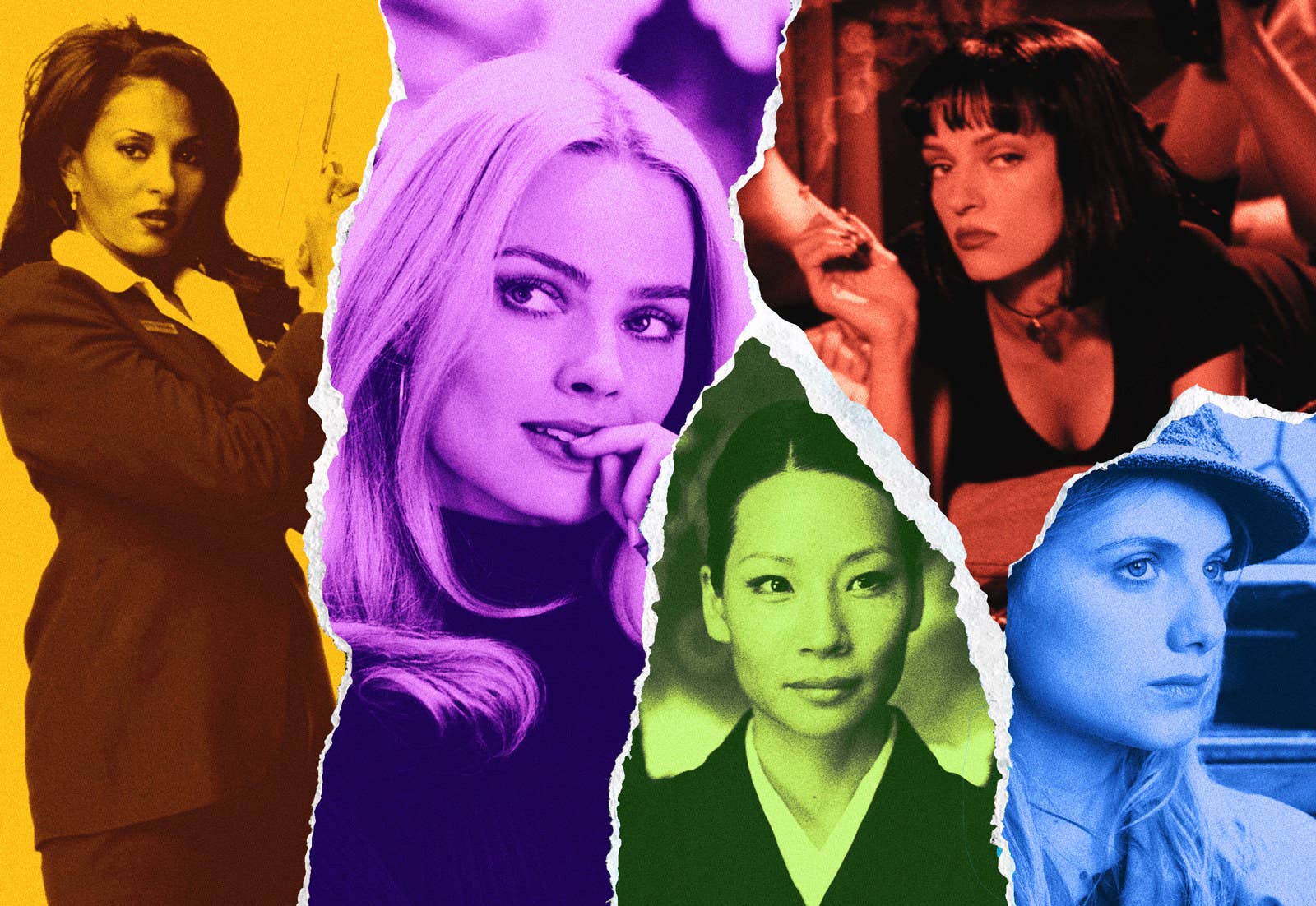
The Cannes Film Festival has been an adoring showcase for Quentin Tarantino ever since he was anointed with the big prize, the Palme d'Or, for Pulp Fiction in 1994. That only made the discomfort of his tense exchange with New York Times reporter Farah Nayeri at this year's event more telling. Tarantino's latest film, Once Upon a Time in Hollywood, made its world premiere at the festival in May, where it received a six-minute standing ovation. The filmmaker and his cast were holding court at the subsequent press conference when Nayeri pressed Tarantino about why the movie’s woman lead, Margot Robbie (playing real-life Manson family murder victim Sharon Tate), had so little dialogue in the shaggy 1960s-set showbiz comedy.
"This is a person with great acting talent, and yet you haven’t given her many lines in the movie," Nayeri said, citing Robbie's roles in I, Tonya and The Wolf of Wall Street. "I guess that was a deliberate choice on your part. And I just wanted to know why that was that we don’t hear her speak that much." Tarantino didn't reply to Nayeri so much as refuted her whole line of questioning. "Well, I just reject your hypotheses," he said, leaving Robbie to smooth over the awkward moment by speaking about the challenge of playing a character who’s mostly by herself in her biggest scenes.
It was, to be fair, an oddly phrased question. Tarantino didn't write the script around the cast; Once Upon a Time features a range of famous faces in much smaller roles than Robbie's; and even with a writer as verbose as Tarantino, counting lines is not a surefire way to measure the quality of a part. But his curtness in dismissing the concerns of a woman journalist (dredging up memories of his painfully testy exchange with critic Jan Wahl in 2003) made the exchange explode across the internet. And it reignited a conversation that's dogged the director for years and that has, post-#MeToo, risen in volume: As a filmmaker, is Tarantino bad to — or for — women?
Because he's always seemed like the kind of guy who could be, right? The smirking film geek elevated to directorial deity; the motormouthed autodidact with a fondness for lavish violence, pop culture ephemera, and racial slurs; the man whose work has been enshrined on so many dorm room walls. The idea of Tarantino — his public persona and the mile-wide toxic streak in his fanbase (variations on "Well, I just reject your hypotheses" immediately became a Twitter bio red flag) — has had a tendency to loom at least as large in the public consciousness as his actual artistic output. When author Carmen Maria Machado tweeted "Why even pretend like he gives a shit about female characters?" in response to the Cannes story, she was expressing a sentiment that seems to be more about the man than his movies — which, love or hate them, have inarguably centered some complex, considered women characters.
The last few years have left Tarantino looking less like the usual bad boy of cinephilia and more like a crushingly familiar type of standard-issue shitty guy. Not a sexual harasser, but a man willing to disregard the well-being of women — or overlook violence inflicted on them — in order to pursue his professional goals. It's a common thread in both the revelations about how he pressured Uma Thurman into driving a car in a scene that left her injured on the set of Kill Bill and how he (per his own regretful admission) kept working with Harvey Weinstein even though he knew about his predatory behavior.
Tarantino's work resists being painted with a broad brush, despite the tendencies to hold him up as either an unimpeachable genius or an anti-feminist nightmare.
The picture of Tarantino that's emerged in these stories is that of someone who has heard and then bulldozed past the concerns of women who’ve collaborated with him, trusted him, and (in the case of Mira Sorvino) had a relationship with him. That’s been grounds enough, for some, to write off his work forever. For those of us who haven't, Once Upon a Time in Hollywood has provided new material for the reignited discussion about how he depicts women and, in particular, how he depicts violence against them.
For what it's worth, I don't think Tarantino hates women. I think he is sincerely invested in — and likes — writing women characters, and gives more thought to their interiority than some other lauded filmmakers have. But I also think that when it suits him to not think about these things, he doesn't — that he's perfectly comfortable rejecting even the possibility that he's made missteps because he's so sure of his own authorship and his right to be king of his own cinematic worlds. His love of movies and his faith that their transportive pleasures justify themselves have always set his work apart. But those beliefs are also a convenient way of dodging the fact that those movies then play in the real world, where you might find yourself sitting in a theater full of people guffawing in delight at the sight of Jennifer Jason Leigh getting belted in the face.
Tarantino’s filmography now sprawls over three decades, starting with work that was key to shaping the tone (in ways both great and terrible) of ’90s indie cinema, and stretching all the way to Once Upon a Time, a studio feature about a middle-aged male friendship that's a wild outlier on a summer schedule of franchise installments and remakes. And when we look at that body of work through the lens of the most memorable women characters Tarantino has put onscreen, it includes both some thrilling highs and some persistent, perverse blind spots. His work resists being painted with a broad brush, despite the tendencies to hold him up as either an unimpeachable genius or an anti-feminist nightmare.
Tarantino hasn’t changed all that much as a filmmaker over the course of his career. While his output has scaled up, and lost warmth in the process, his favorite themes and tics were there from the start and have remained largely intact. But some things have changed dramatically: what we ask of that work, the way we talk about movies in general, and whose voices get heard in that conversation. Viewers in 2019 are simultaneously flocking to see Tarantino's new movie and making more serious demands of a filmmaker who's always treated cinema as an amoral, larger-than-life escape from those demands — and if he is not going away (yet), then neither is this debate.
As long as Tarantino keeps rejecting the hypotheses of these questions, the women in his movies will simply have to speak for themselves.
Alabama Worley — True Romance (1993)
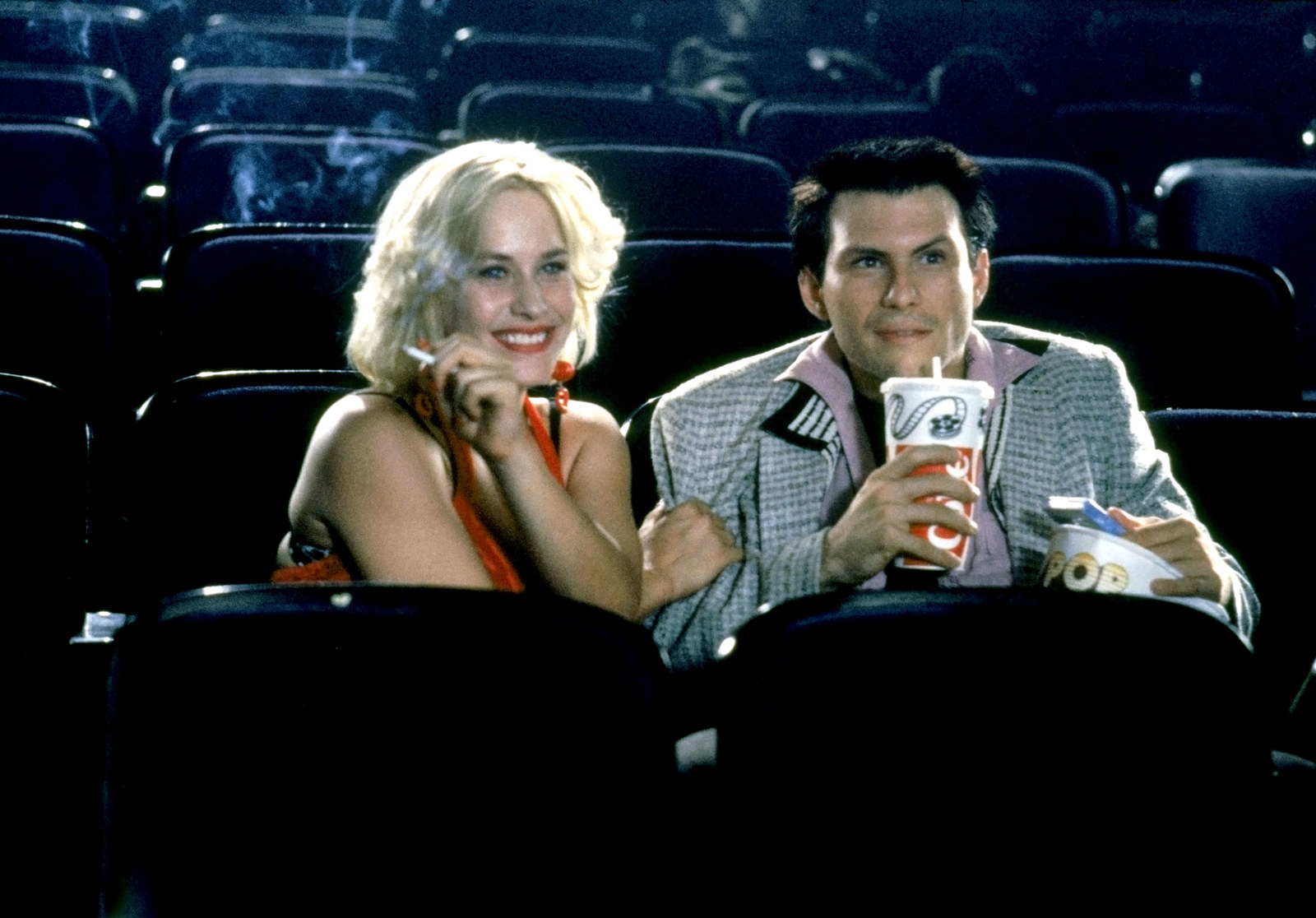
The character who best supports the idea of Tarantino as a sweaty-palmed fantasist appears in a movie he wrote but didn't direct. True Romance, directed by Tony Scott, came a year after Tarantino’s own 1992 directorial debut Reservoir Dogs, a heist thriller in which the closest thing to a woman character is the amount of time the thieves spend talking about Madonna. The stylishly murderous and emptily enjoyable movie is a wish-fulfillment feature about a Detroit comic store employee named Clarence (Christian Slater) who meets his perfect woman, Alabama (Patricia Arquette), and embarks on a bullet-strewn criminal adventure with her.
Alabama, played in an admittedly fabulous whirl of push-up bras and animal print, is a Russian doll of indulgent ideas. When she approaches Clarence at a martial arts triple feature, she's a too-good-to-be-true combination of interested in and apparently uninformed about all his favorite things, happy to hear him hold forth about everything from Sonny Chiba to Spider-Man ("You're a girl after my own heart," he observes, not realizing that she's actually performing as a geek’s wet dream). The next day, after confessing she was actually hired by his boss as a birthday present, Alabama reveals herself to be a whole other sort of fantasy — a sex worker who's fallen in love with her client and who's looking to be rescued so that she can have something real with him. ("I think what you did…was so romantic!" she sobs after he takes it upon himself to kill her pimp.)
In Tarantino's original ending, Clarence dies in the big shootout that closes the movie. It doesn't retroactively make Alabama any less of a dream creation, but that downer conclusion would at least burst the masculine fantasy bubble of a geeky retail worker who's able to abruptly segue into being an action movie badass. Scott opted instead for the couple to survive, turning what, in the script, was Alabama's grief-stricken recollection of a shared happy memory into a chorus of unironic, tonally on-brand praise for Clarence: "You're so cool. You're so cool. You're so cool."
Mia Wallace — Pulp Fiction (1994)
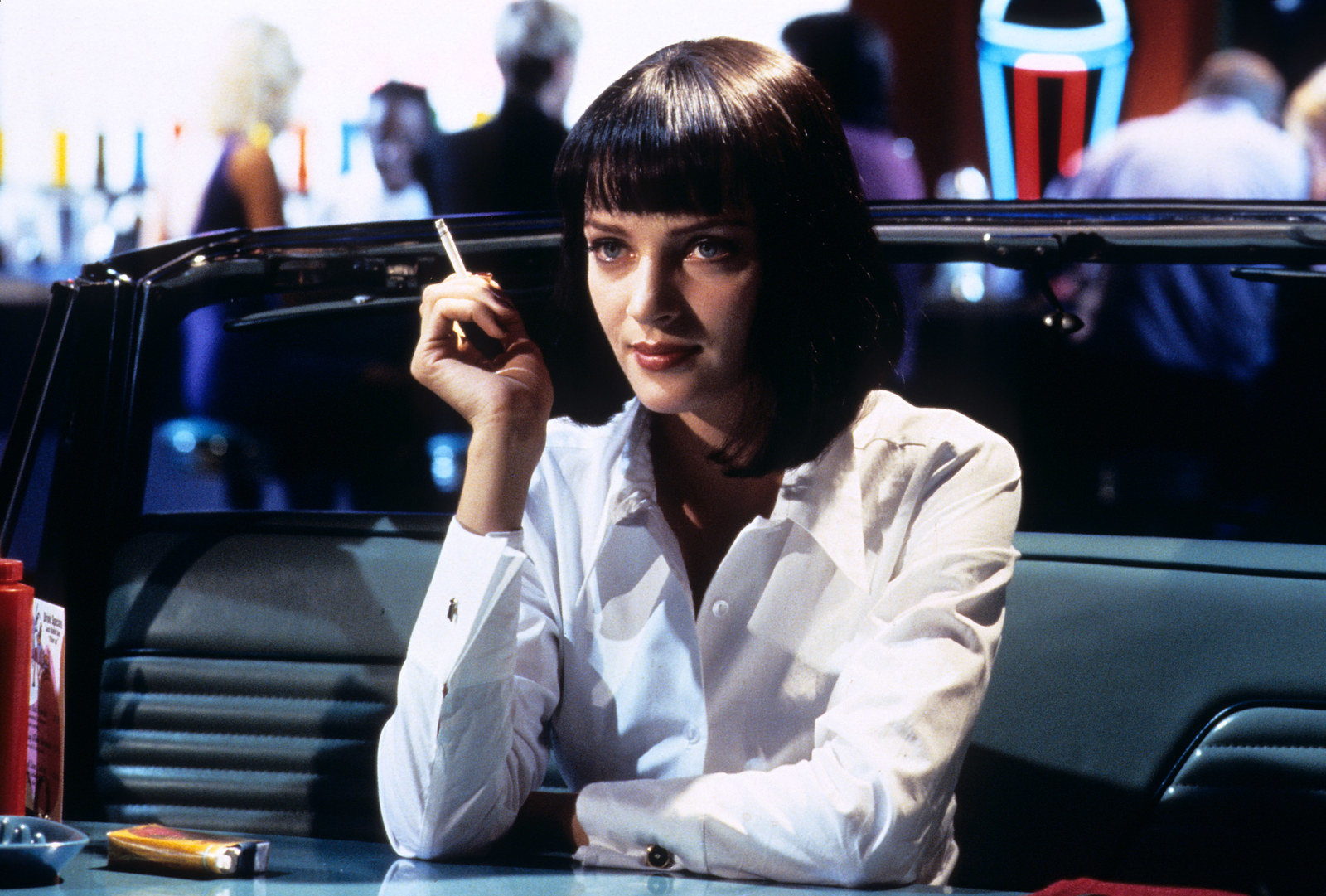
In Tarantino’s still-dazzling breakthrough Pulp Fiction, Mia (Uma Thurman) — the failed actor turned spouse of gang boss Marsellus Wallace (Ving Rhames) — shares a vague aura of retro hipness with Alabama, while being significantly more interesting. We hear about her before we ever see her, in a conversation between hit men Vincent Vega (John Travolta) and Jules Winnfield (Samuel L. Jackson) that foreshadows her as a bored trophy wife (or femme fatale) looking to enlist her husband's employees in dangerous jealousy games.
Of course, neither of them really knows what they're talking about. When she does make an appearance, it's in pieces, like a visual drumroll — first her voice, then her lips talking into a microphone, then her feet (always with the feet!) — before we see the unexpected whole: a canny, lanky, black-bobbed beauty who runs circles around Vincent when he's tasked with entertaining her for the evening.
Watching Pulp Fiction now, one of the things that stands out is how three-dimensional even passing characters feel, from the morbidly curious cabbie Esmarelda Villalobos (Angela Jones) to a figure as minor as Raquel (Julia Sweeney) from Monster Joe's Truck and Tow, who manages to come across as someone with a big story to tell in just a few seconds of screentime. Mia, who occupies a more sizable slice of the movie, contains a whole novel — a figure of restless, unpredictable energy whom Vincent becomes plausibly entranced by despite knowing how off-limits she is. As to whether Mia was thinking about enjoying more than some unanticipated chemistry with him, we never find out. The segment careens off in another direction that ends with Vincent stabbing a needleful of adrenaline into her chest to stop an accidental overdose.
Pulp Fiction was the first of the three features Thurman and Tarantino would make together, a creative partnership that ended in physical pain and personal betrayal (though the two seem to have since patched things up, and Thurman's daughter Maya Hawke appears in Once Upon a Time). In a 2018 interview with Maureen Dowd, in which Thurman talked about Weinstein and the Kill Bill car crash, she said, "Personally, it has taken me 47 years to stop calling people who are mean to you 'in love' with you." The line comes to mind when watching the scene in which Mia is revived, which is set up as a kind of blackly comic alternative to the penetration that had previously been on Vincent's mind — as though violence and sex are interchangeably pleasurable spectacles.
That moment could be seen as laying the groundwork for what would emerge as Tarantino's unfettered theory of brutality, in which everyone's eligible to dole it out and receive it. It's an approach that has brought Tarantino's films to surprising, sometimes thrilling, sometimes fucked-up places — but it's not actually equitable, because we don't watch all violence the same way; violence against some characters comes with a lot more baggage than violence against others.
Jackie Brown — Jackie Brown (1997)
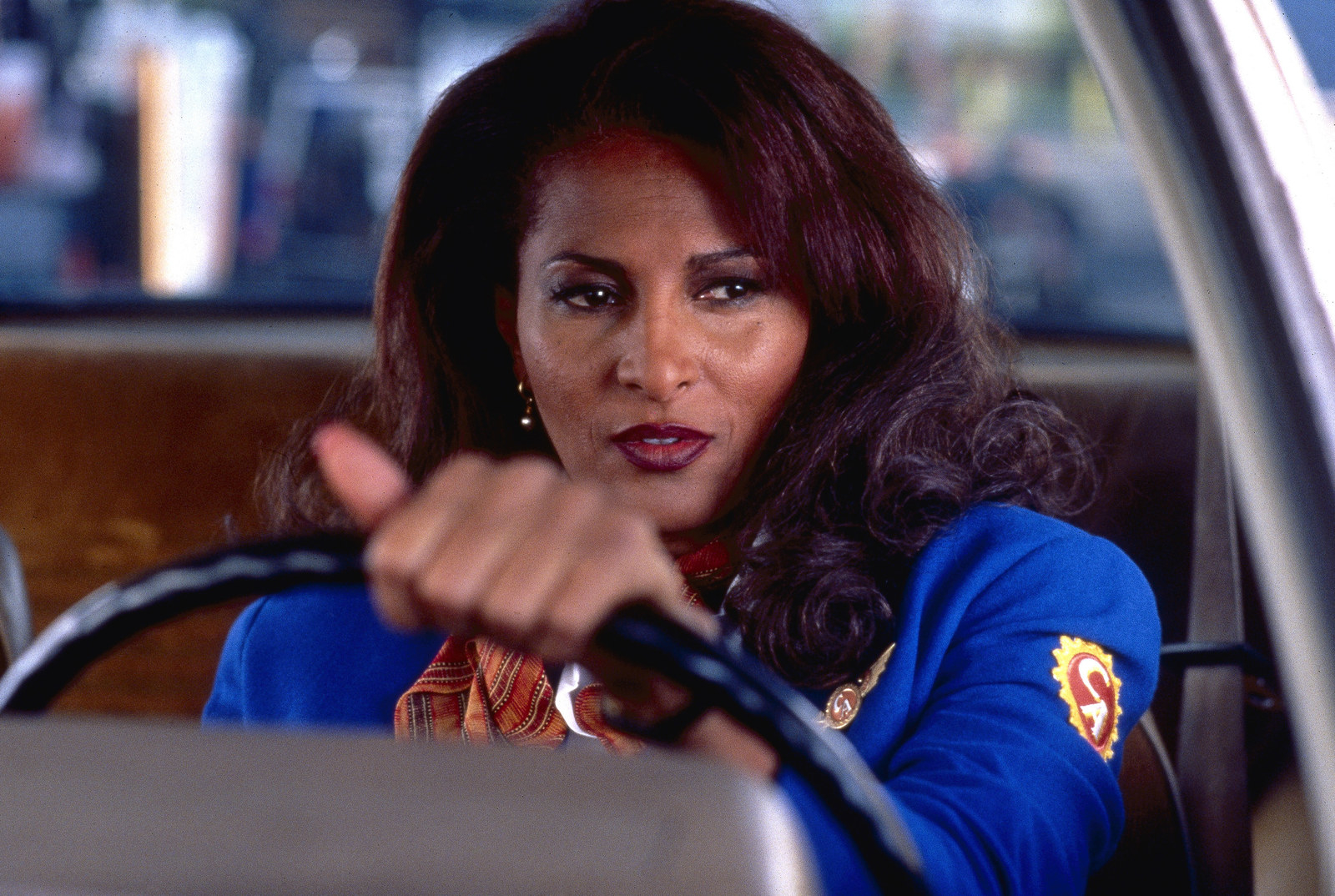
When it came out in 1997, Jackie Brown was looked at as a subdued follow-up to and possible step down from Pulp Fiction, which is funny given that these days, "actually, it's his best film" has become a canonical cool-kid opinion. Jackie Brown was saluted as a career resurrector for Pam Grier in the same way that Pulp Fiction was for John Travolta. And, seen through the lens of a comeback vehicle, it's definitely a richer and more nuanced film.
What's so immensely satisfying about Tarantino’s adaptation of an Elmore Leonard novel is that the movie frames Grier and her character Jackie the same way: as women who have been shamefully undervalued by everyone around them for too long. Jackie, a flight attendant who's been running errands for a gun dealer named Ordell Robbie (Samuel L. Jackson), is a radiant star right there in the bedraggled backrooms of the greater Los Angeles area. But only bail bondsperson Max Cherry (Robert Forster) seems to notice it — he, at least, is rightfully bowled over from the first moment her sees her.
Of course we see her, too, because the camera invites us to acknowledge this obvious truth right from the opening sequence of Jackie making her way to work to the sound of Bobby Womack's "Across 110th Street." Jackie isn't a dedicated criminal — she’s a woman who got a raw deal years ago and who's been working with that deficit ever since, now 44 and making $16,000 a year at a low-tier airline because no better outfit will hire her. ("Didn't exactly set the world on fire, did you, Jackie?" jibes an LAPD detective at one point.) The movie is deft in showing how criminals and cops alike take it for granted that Jackie is powerless, putting her in a no-win situation that she — simultaneously regal and wary — turns to her own advantage.
Jackie Brown is Tarantino's only adaptation, and maybe working with someone else's source material is what keeps the movie firmly planted on the ground (its heroine's profession aside), in a way we wouldn't see again until Once Upon a Time. It's also proof that Tarantino can, when he chooses to, restrain himself; when a major woman character gets abruptly killed in the movie, for example, we see the shooter but not the bloody result of his shots.
There's no glamour in the movie's portrayal of crime, which plays out in airport parking lots and mall food courts. And in its intimate portrait of Jackie — in particular her cautious connection, straddling a potential romance and a heist partnership, with Max — there's a deep attention paid to Jackie's feelings of barely managing to keep her head above water as the years tick by.
O-Ren Ishii — Kill Bill: Vol. 1 (2003)
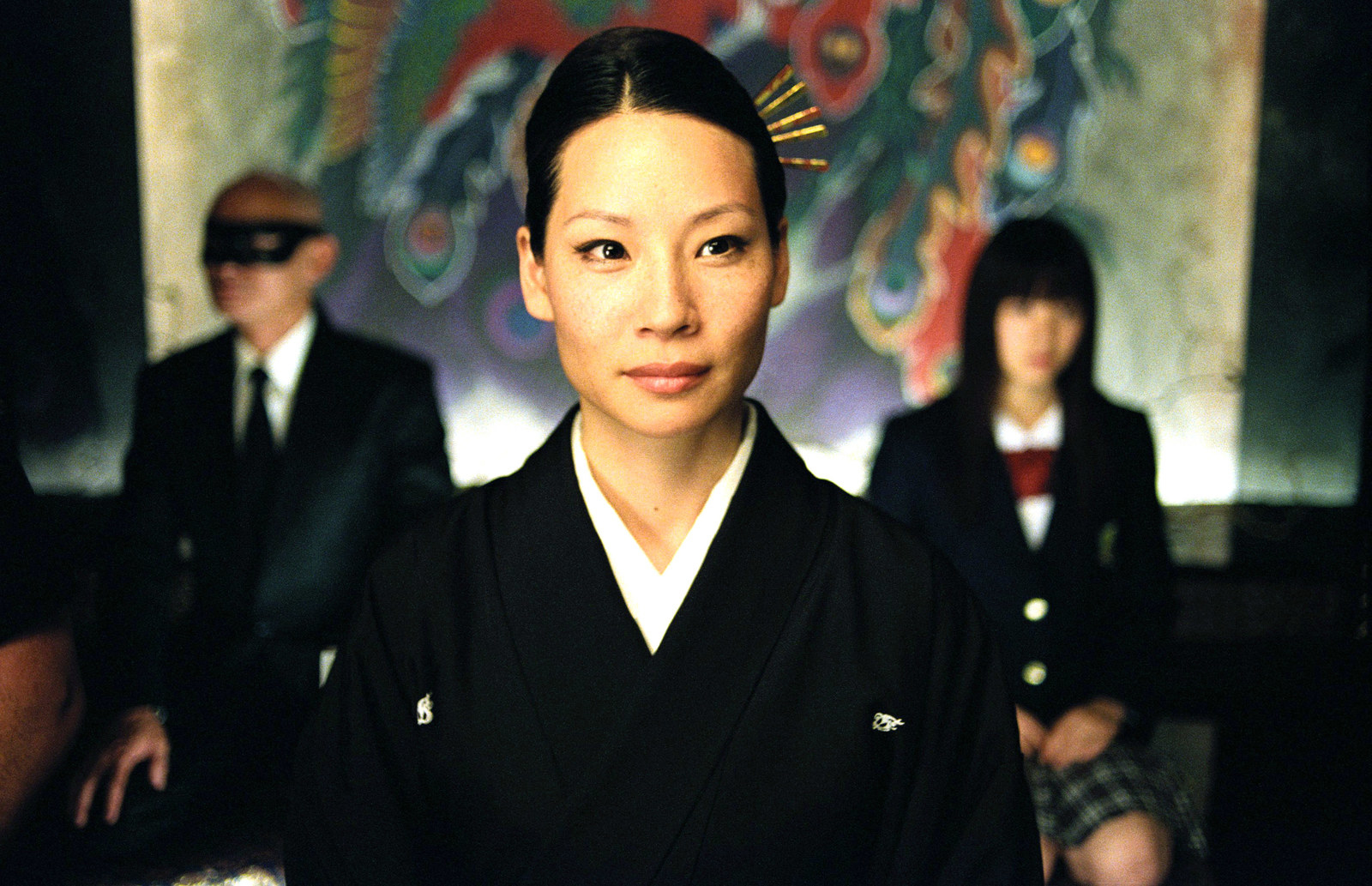
It doesn't feel right to describe O-Ren Ishii, the yakuza boss played by Lucy Liu in Kill Bill: Vol. 1, as the villain. She's an antihero in her own right, possessed of a backstory rife with grief and rage that’s delivered in one concentrated, partially animated dose. Revenge powers most of the carefully choreographed violence in the Kill Bill movies, and while the pursuit of it is presented as an almost holy right, it's also made clear that it's not a right exclusively held by the movie's heroine. After the daughter of Vernita Green (Vivica A. Fox) witnesses her mother’s death at the hands of Beatrix Kiddo (Thurman), Beatrix turns to the young girl and solemnly acknowledges her right to retaliation: "When you grow up, if you still feel raw about it, I'll be waiting." O-Ren was a young girl when her family was killed, and she definitely still felt raw about it.
While all the members of the Deadly Viper Assassination Squad get some emotional shading in Tarantino’s script, it's O-Ren who's positioned as a fully drawn counterpart to Beatrix — not just a name to tick off the list, but a vision of what can happen after all the wrongs that derailed your life have been addressed. The Kill Bills may be two separate movies, no matter what Tarantino has decreed, but they make up one exultant fetish object, a sprawling collection of martial arts movie references that walks the line between loving homage and appropriation.
It would take a whole other essay to delve into Tarantino's record with race (the latest battle being over his depiction of Bruce Lee in Once Upon a Time), but he's never been easy to pin down. Details like the specificity of O-Ren's background as an ethnically mixed outsider, and her ferocious defense of her right to her national identity, provide a counterweight to the film's stylized Tokyo. When, in their fight together, O-Ren taunts Beatrix as a "silly Caucasian girl [who] likes to play with samurai swords," it's a fascinatingly complicated sentiment from a character who's had to fight harder to belong in the country she was born in than this foreigner who only needed to hop on a plane to get gifted with Hattori Hanzō steel.
Beatrix Kiddo — Kill Bill: Vol. 1 (2003)
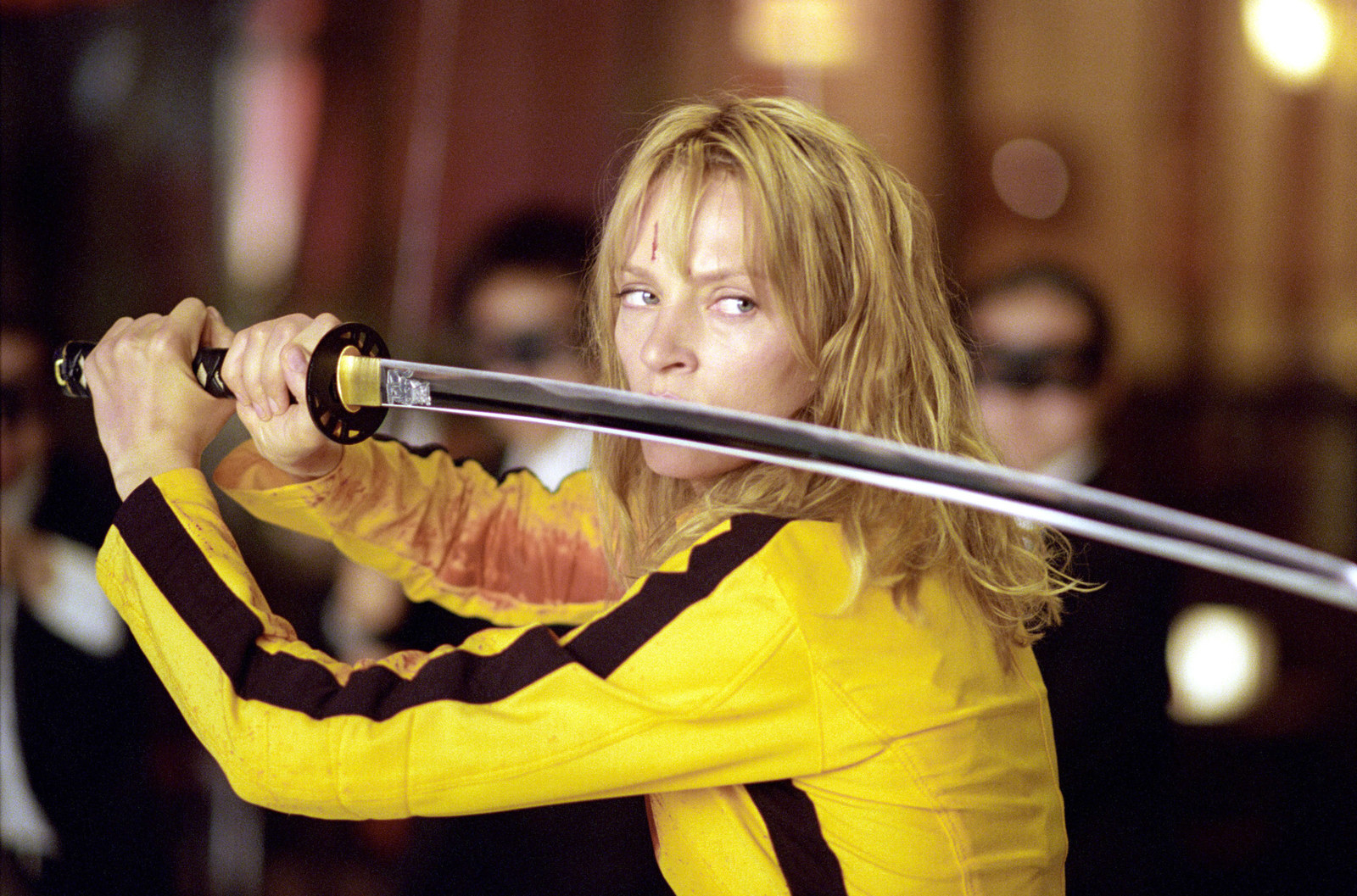
It's a different experience to see the words "Based on the character of the Bride created by Q&U" in the end credits of Kill Bill: Vol. 1 now than it was 16 years ago, given that Thurman has said that after the car crash on set, she "went from being a creative contributor and performer to being like a broken tool." Onscreen, Beatrix Kiddo — the Bride — does feel indelibly like a joint creation, a character whose status as a near-superheroic fighter is paired with increasingly complex emotional beats about motherhood and a search for happiness.
In the Kill Bills, Tarantino managed to make a woman-led action story that feels unsparingly indifferent to gender during the fight sequences but deeply considered about it when it comes to character. That achievement still feels exhilarating as the movies progress from massive set pieces like Beatrix’s battle with O-Ren in the House of Blue Leaves to her showdown of personal narratives over a table with Bill (David Carradine). It's hard to imagine that balance could have worked without input from Thurman. Certainly in films Tarantino made after Kill Bill, without her, that delicate tension is gone and there's an increasing queasiness in its place.
That said, there's an odiousness to what happens to Beatrix when she's in a coma — the offscreen setup to the events of Kill Bill — that's always rankled. Subjecting the character to repeated sexual assault while she's unconscious for years isn't just unnecessary from a narrative point of view, but agonizingly flippant about the overt horror of having one's body be treated like a sex doll. In films that followed, Tarantino started using historical context to more righteously couch the violence he's always relished, a choice that actually felt more disingenuous to me than the violence just existing for its own sake. What Tarantino subjects Beatrix to in her coma feels like a test run for that strategy.
She gets raped in order to give added, justified zest to her eventual graphic retaliation, but only after the film licks its lips about what's happened to her (just try to forget that grubby jar of petroleum jelly). Tarantino would deploy a similar trick in his gleefully nasty Death Proof (2007). That movie manages, quite skillfully, to have its cake and eat it too by introducing a group of hip women friends, having them be gruesomely murdered by a misogynistic serial killer named Stuntman Mike (Kurt Russell), and then introducing another group of hip women friends to stomp him to death.
Shosanna Dreyfus — Inglourious Basterds (2009)
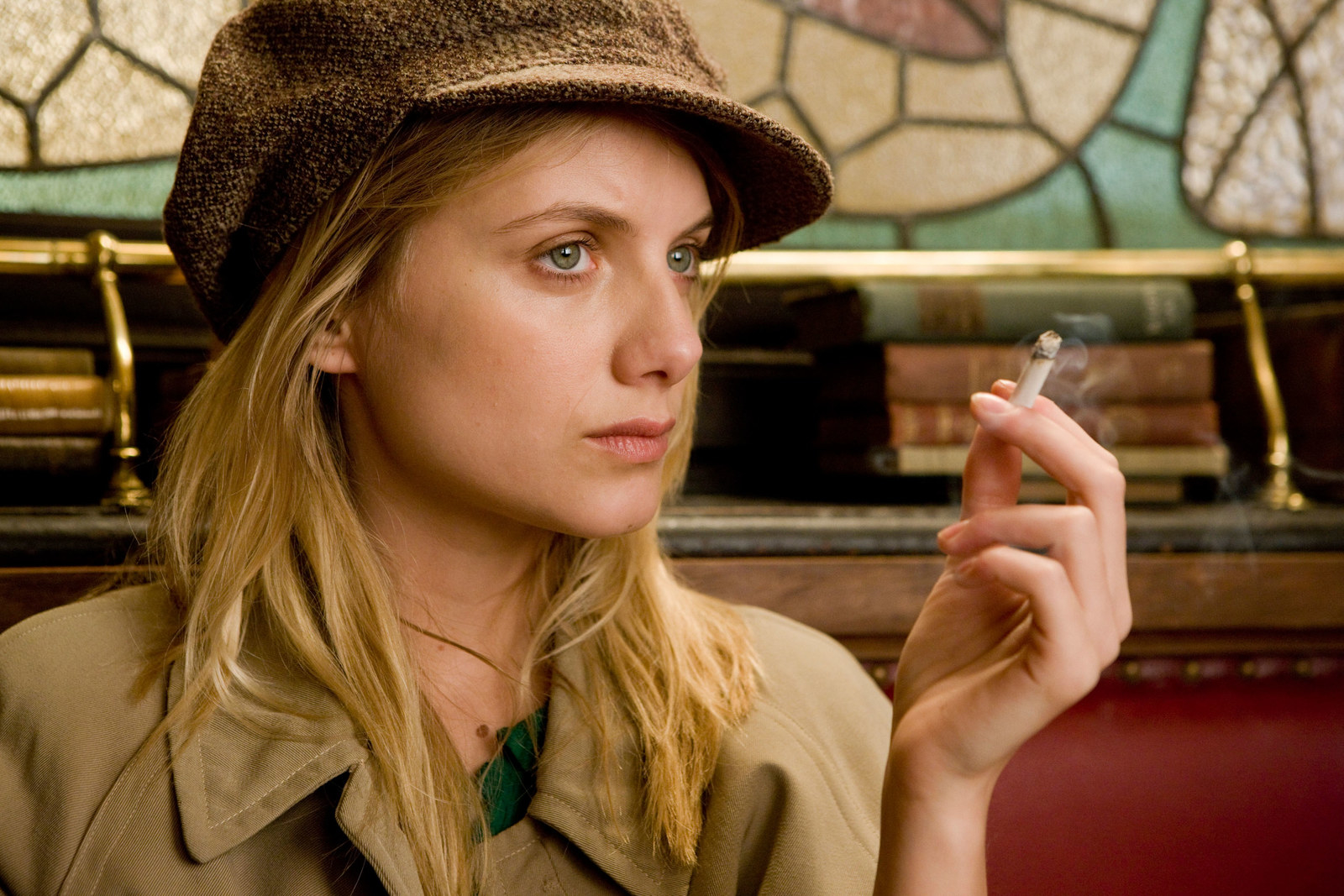
A righteous historical context for violence forms the framework for both 2009's Inglourious Basterds and 2012's Django Unchained, which deployed Tarantino's sadistic tendencies against Nazis and slave owners, respectively. The characters in these scaled-up movies tend to be writ larger too, losing a lot of the oddball texture and humanity that could be found in his earlier work.
Kerry Washington’s Broomhilda in Django Unchained is a leading lady who has a lot more significance as a motivating factor for the title character (Jamie Foxx) than she does actual screentime. Mélanie Laurent fares better as Shosanna Dreyfus in Inglourious Basterds, a young Jewish woman who witnesses her family being slaughtered on the orders of "Jew Hunter" Hans Landa (Christoph Waltz), and later, as a movie theater owner in Paris, gets a shot at revenge against the Reich.
Inglourious Basterds has a sweeping ensemble of characters who often feel like they're introduced only in order to die. But Shosanna is an emotionally distinct through line, there at the first scene and the big finish, and she’s the one character who really feels like she has a life instead of a log line. Shosanna has a tender exchange with her lover Marcel (Jacky Ido); she lets out a gasp of shaky relief after being cornered into a conversation with Landa, who doesn't recognize the girl who got away from him. Most pressingly, she has to deal with the intrusive attention of German war hero Fredrick Zoller (Daniel Brühl), who unknowingly enables her nitrate-fueled plan.
In a feature filled with film critics turned spies and outrageous guerrilla fighters who carve swastikas into Nazi foreheads, the sequences between Shosanna and Zoller stand out because of how vividly they evoke a common real-life experience: what it's like to be a woman trying to manage the unwanted romantic forays of a man who seems likely to retaliate if turned down. Whether you find sincere thematic weight in the way Tarantino uses the power of pulp cinema to rewrite the past in these movies, or detect something more mercenary in the way he chooses to leverage historical atrocities, there's no denying that Shosanna gets one hell of a final image. But it's the way she approaches Zoller beforehand that feels more poignant — a flash of sympathy that dooms her, a rare and fatal moment of softness from a character of steely resolve.
Daisy Domergue — The Hateful Eight (2015)

The only moment of softness in The Hateful Eight is a setup to a gory gag. Daisy Domergue, the fugitive gang member played by Jennifer Jason Leigh, has a tender exchange with her brother Jody (Channing Tatum), who's come to her rescue, right before he gets shot in the head and his brain matter splatters all over her. No time for any sort of sweetness in the 2015 movie, which depicts what happens when a collection of people divided by racism, misogyny, class resentments, profit motives, criminal affiliation, and war are pinned together in a Wyoming outpost in 1877. Historical righteousness is shed in favor of basking in period ugliness, and the film shifts audience sympathies between characters who are, as the title promises, all hateful in different ways. Daisy, a sneering, cackling punching bag who barks racial epithets at Marquis Warren (Samuel L. Jackson), is no exception.
But she is the only woman in the room, and when she's on the receiving end of violence it's inevitably presented as a noxious punchline — these men are cheerfully and repeatedly smacking around a significantly smaller person because they can. John Ruth (Kurt Russell) is the bounty hunter bringing Daisy in, and his act prompts a few quickly dismissed conversations about women getting executed ("I can see you ain't got mixed emotions about bringing a woman to the rope"). Those lines feel like Tarantino making a case for his own treatment of Daisy — that she can keep up with the men, and she can die like them too.
While The Hateful Eight couldn't be accused of endorsing any of its loathsome characters, it doesn't stake out a point of view outside of them either. The movie ends with two of the men overcoming their enmity long enough to hang this woman they both despise. And whatever point the movie might be striving to make about a tribalist America, the pleasure the characters take in watching her kicking feet in that scene really can't be separated out from the pleasure the movie takes in the spectacle.
Sharon Tate — Once Upon a Time in Hollywood (2019)
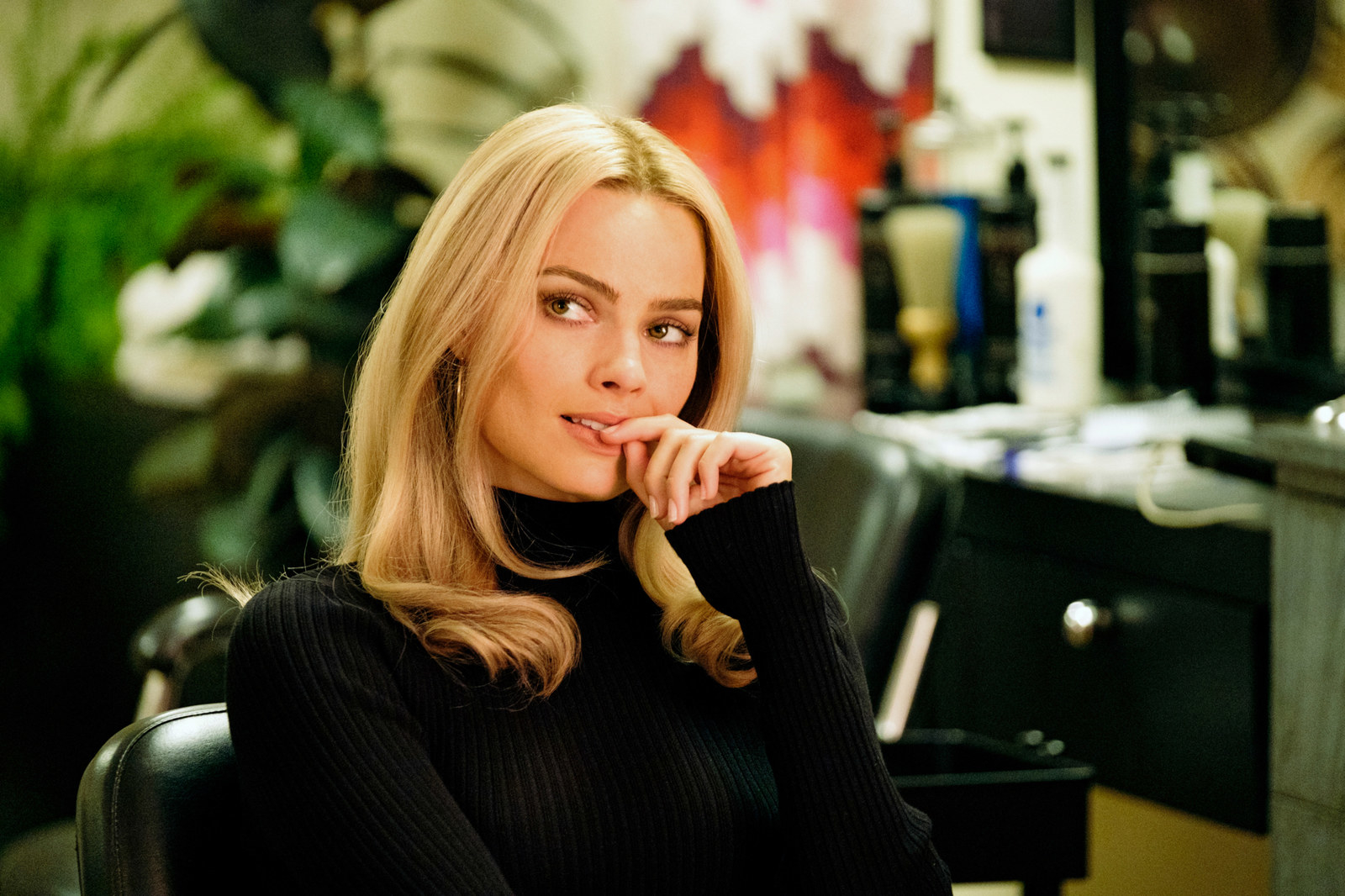
If The Hateful Eight represented a real nastiness nadir, Once Upon a Time has arrived as low-key relief — a melancholy and languid (until its final moments) movie about the friendship between two fading showbiz types who are getting left behind by both counterculture and the American New Wave. The film isn't really about the 1969 Manson murders on Cielo Drive. Instead, it runs parallel to their ramp-up and at a key moment abruptly swerves into an act of historical revisionism. Fictional creations Rick Dalton (Leonardo DiCaprio), a TV star whose career is winding down, and Cliff Booth (Brad Pitt), his stunt double turned driver/gofer/best friend, don't save Sharon Tate and her companions so much as they blunder unknowingly into intercepting their killers. The showdown, when it arrives, is a cacophony of Tarantino tics in one unsettling sequence. It’s an act of savored vengeance against some of history's most brutal villains, brought to us by the magic of cinema, that's also blithely oblivious to the optics of two young women getting their heads smashed in by men for laughs.
And yet the film's depiction of Sharon, as played by Margot Robbie, includes one of the loveliest sequences Tarantino has ever created — in which the acting up-and-comer goes to a public screening of her own movie, an unremarkable Dean Martin spy comedy in which she has a supporting role, and takes in the audience's reactions to her scenes. When Once Upon a Time begins, it observes Sharon from a remove — the neighbor living up the hill from Rick, married to the not-yet-disgraced Roman Polanski (played by Rafal Zawierucha in a near-wordless appearance), and the young and beautiful life of the party. But when it closes in on her at the theater, where she spontaneously identifies herself to the (combination skeptical and gracious) theater employees and puts on glasses to watch the picture, it becomes a heartaching look at someone privately taking joy in her own work. Robbie isn't digitally inserted into the footage she's watching — it's the real Tate onscreen.
Once Upon a Time is an ode to dreck — to the TV shows churned out and watched and then vanished from view, and to the movies no one remembers. The idea that there can still be a kind of valor in making cultural detritus is one that, sporadic jolts aside (did Cliff, with echoes of Robert Wagner, kill his wife or what?), makes Once Upon a Time one of the more compassionate installments in Tarantino's rarely compassionate filmography. The most tender thing the movie does is pull Sharon away from the shadow of her own murder, showing her as an ordinary woman, capable of being both magnetic and mundane. It dares to imagine a life for her that may or may not have led to bigger things onscreen, but that continued — imperfect and alive and no longer frozen in tragedy forever.
For a while now, Quentin Tarantino has been vowing to retire from filmmaking after his 10th feature, which means, if you take him at his word, that his next movie is also going to be his last. As a filmmaker, he's enjoyed what has become the very rare privilege of being able to get funding and name talent together for his not-inexpensive original projects — one of the last of the old guard of A-list directors who are able to do so. The fact that Once Upon a Time opened with a career-best $41 million box office total this past weekend only emphasizes that Tarantino's choice to move on to the territory of TV and theater is a personal one, not one mandated by the shifting industry ("I just think I’ve given all I have to give to movies," he told GQ Australia).
The industry is shifting, though. The age of the genius filmmaker has been coming to an end for a while now, replaced by the reign of corporate-owned IP, more precious to studio executives than any director or star. And Tarantino has been in talks to make a Star Trek installment next — as he puts it, "Pulp Fiction in space" — meaning his last film contribution could be his first franchise one. Tarantino's willingness to work within the boundaries of a beloved brand, even if it's just a lark, echoes what a lot of other directors have had to do if they want a shot at working on something big today. There's something bittersweet about Tarantino's choice to move on, in that light. Because even if you don't like his work, it’s unlikely that when he's gone there will be many others given the opportunity to fill his place in terms of making original work with the same rigor and scale.
When audiences or critics want to talk about something like Tarantino’s treatment of women onscreen, the label of genius can be used as a pass to discount their input.
The irony of Once Upon a Time, a love letter to people grinding out unexceptional work, is that it took Tarantino's exceptional status in the industry to will such an unlikely project into existence. And that's something to mourn when it comes to how Hollywood has largely fallen out of love with the idea of the visionary director — the loss of so much potential for weirder, more adventurous, more personal, or more out-of-the-box art, with streaming services only half-assedly attempting to pick up the slack.
But there have been enormous costs to the old conception of director-as-god as well. The industry has given Tarantino little reason to doubt the supremacy of his own artistic vision, forming an effusive bubble around his work. It makes a difference who gets granted that much free rein and whose concerns get ignored in favor of elevating one person's vision above all else — even when, like Thurman, they're trying to speak up on behalf of their own safety. When audiences or critics want to talk about something like Tarantino’s treatment of women onscreen, the label of genius can be used as a pass to discount their input.
Aside from brief moments like the one at Cannes in May, Tarantino doesn't seem to have been challenged much on his approach to filmmaking at all. And when he was, well, he didn't just refuse to give an answer; he refused the concept of the question. That dismissive attitude — which coexists with the vivid, memorable women Tarantino has written into his scripts over the years — is emblematic of his insistence that his films can borrow power from real-world concerns but owe nothing to the actual people, especially the actual women, who experience them. Imagine having that kind of certainty — imagine believing you always have it right. ●
